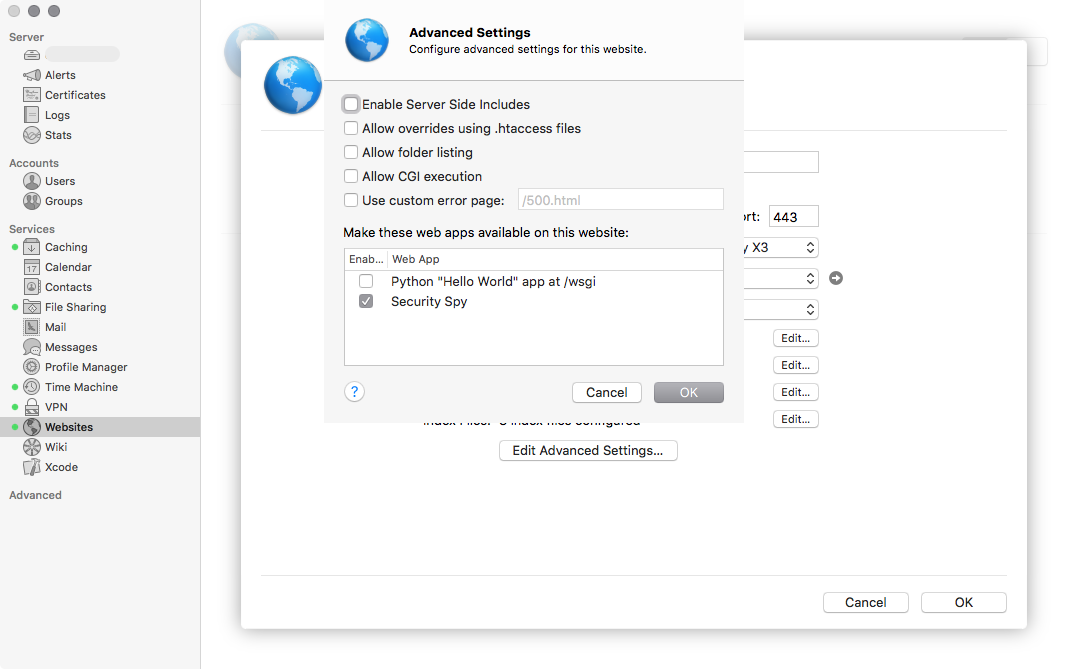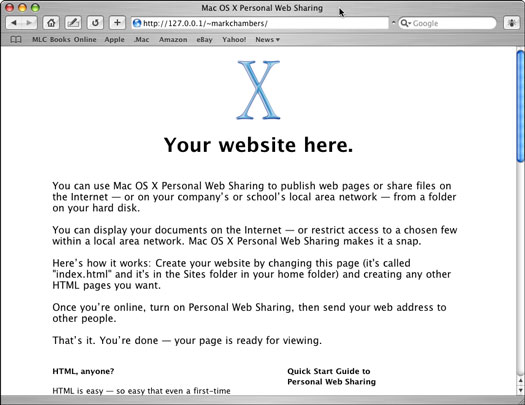OS X has a built in web server. For some users, especially web developers, it may come in rather handy. You can use it for locally hosting web sites (typically for development purposes), for running a local WebDAV server (which may, for instance, come in handy for local syncing of apps like OmniFocus).
When OS X 10.8 was released, Apple had removed the convenient “Web sharing” switch in the Sharing options of System Preferences. Here’s a couple of ways to start and stop you local Apache server:
1. With a GUI
UltiDev Web Server Pro for Mac OS X: Best alternatives Check out alternatives to UltiDev Web Server Pro for Mac proposed by our editors and user community. By appsolute GmbH. MAMP PRO is the commercial, professional grade version of the classic local server environment for OS X: MAMP. Designed for professional. OS X: You need only one tiny command to start a web server from any directory through OS X's terminal. If you've got a web site lying around and need to test it out, this is possibly the.
Install Apache Web Server Mac Os X
There is a free Preference Panel available at Click On Tyler. One installed (takes a quick double-click) you will have a new panel in your System Preferences which provides some very basic info about your Local Apache sites, and an easy way to turn the Apache server ON and OFF.
There is another Preference Pane here at Stowlake.com, although it says it works on 10.8 but nothing about 10.9 and above. It worth trying out though, if you want to give the GUI option a go.
2. Using Terminal commands
Personally, I recommend this method if you are getting into working with your system beyond the superficial (yet convenient) bling of the OS X GUI interface. Also, if you’re into developing web sites, becoming familiar with Apache commends on OS X is bound to come in handy over time.
To start the Apache server on OS X
or

(drop the -w if you don’t want this to persist after a system restart)
- Get this from a library! Mac OS X Web server handbook. David L Hart - Mac OS X finally makes it possible to run a secure, high-performance, rock-solid reliable Web server with all the simplicity the Macintosh platform has always provided. This book walks you.
- Nov 07, 2003 In essence, using OS X, a complete Web server environment can be configured and managed from the localhost, including Web project sharing over your local network for collaboration during development.
To stop the Apache server on OS X

or
(again, drop the -w if you don’t want this to persist after a system restart)
To restart the Apache server
It is important to note these particular commands are persistent. Meaning, if you start Apache using the first or second command above, it will persist through a system restart (i.e. Apache will restart after you restart OS X). Likewise, if you stop Apache with the third or forth command above, it will persist through a system restart. You can drop the -w from the second and forth command if you don’t want it to persist through a system restart.
Mac Os X Server 1.0
Mac OS X is Apple's operatingsystem for its line of Macintosh computers. Its interface, known asAqua, is built on a Unix foundation. Although ithas much of the look and feel of the former Mac OS,features such as preemptive multitasking, symmetric multiprocessing,multithreading, and protected memory give Mac OS X improved stabilityand performance. For the current version's system requirements, seeApple's Mac OS XTechnical Specifications.

Currently, four Mac OS X-related products are available:
Mac OS X: This is the version most Macintoshowners should use. It is a consumer operating system designed for useon your personal computer. For more information, see Apple's Mac OS X page and Developer page forMac OS X.

Install Web Server Mac Os X
Mac OS X Server: This is Apple's server operatingsystem. It is similar to the consumer release of Mac OS X, but alsoincludes a suite of network services, such as a print server, filesharing, QuickTime streaming, NetBoot, and advanced webhosting. For more information, see Apple's Mac OS X Server page.
iOS: Based on Mac OS X, versions of iOS run on theiPhone, the iPod touch, and the iPad. The iOS was designed forhandheld devices, and is much more tightly controlled than otherversions of Mac OS X. Despite their shared origins, applications(apps) developed for iOS are not compatible with Mac OS X, and viceversa.
Mac Os X Server 1.2
Darwin:Darwin is the Unix-likefoundation upon which Mac OS X is based. Its code is opensource, and it is available as a stand-alone operatingsystem. Although Darwin will run many Unix applications, including theX Window System, it does not have the Mac OS X interfaceand thus will not run Mac OS X applications. For more information, seeApple's Developer Open Sourcepage.
